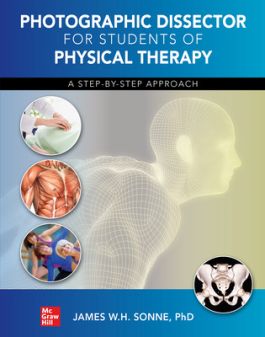Photographic Dissector for Physical Therapy Students
Step 1. Download Adobe Digital Editions Both PC and Mac users will need to download Adobe Digital Editions to access their eBook. You can download Adobe Digital Editions at Adobe's website here.
Step 2. Register an Adobe ID if you do not already have one. (This step is optional, but allows you to open the file on multiple devices) Visit account.Adobe.com to register your Adobe account.
Step 3: Authorize Adobe Digital Editions using your Adobe ID. In Adobe Digital Editions, go to the Help menu. Choose “Authorize Computer.”
Step 4: Open your file with Adobe Digital Editions. Once you’ve linked your Adobe Digital Editions with your Adobe ID, you should be able to access your eBook on any device which supports Adobe Digital Editions and is authorized with your ID. If your eBook does not open in Adobe Digital Editions upon download, please contact customer service
Publisher's Note: Products purchased from Third Party sellers are not guaranteed by the publisher for quality, authenticity, or access to any online entitlements included with the product.
An accessible guide to anatomical structures and the tools used for dissection
Learning and naming the many parts and systems of the human body can be a daunting task for medical and physical therapy students preparing for careers in various scientific and medical professions. With a combination of informative text and clear images, Photographic Dissector for Physical Therapy Students provides an unparalleled examination of anatomical structures and the tools used for dissection.
Using visible external landmarks, students will learn how to locate internal structures and develop a better understanding of anatomy. The book offers thorough coverage of the types of tools for dissecting along with detailed photographic instructions for every step of dissection. Each tool is clearly defined with its purpose.
Features
- • Modeled to follow the curriculum of Doctor of Physical Therapy programs, which often includes simultaneous courses in kinesiology and physiology
• Clinical correlates throughout the book provide important information about function and dysfunction in order to inspire diagnostic thought
• Examples are drawn from real cases in clinical practice
• Each chapter contains a checklist of important structures
• Exam-style multiple choice questions and answers, along with explanations and strategies for working through the questions

